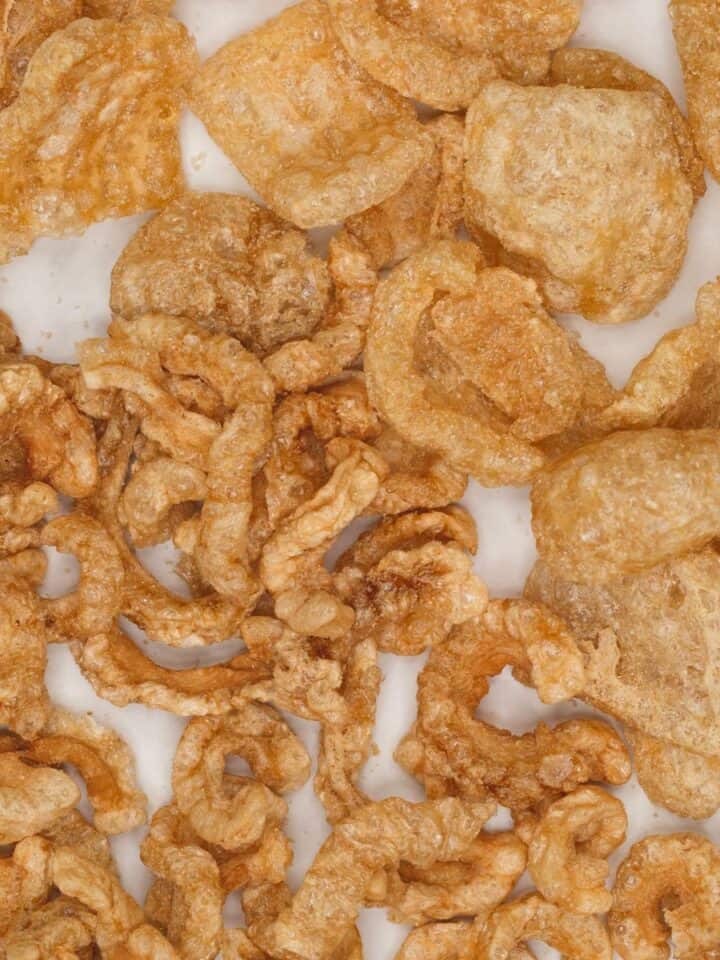Panutsa or panocha is a natural, unrefined sugar made from sugarcane juice with a deep, molasses-like flavor. This traditional Filipino sweetener is less processed and richer in taste than regular sugar, making it a better alternative.

Jump to:
What is panutsa?
Panutsa, also called panocha or sangkaka, is a sweetener derived from sugar cane, the same raw material used for white sugar. The process involves crushing and pressing sugar cane to extract the juice, which is then filtered, boiled, and stirred in large metal vats until it becomes syrupy. As it thickens, it transforms into a brown, dough-like substance and is then poured into molds to cool and harden.
What does panutsa taste like?
Panutsa has a sweet and caramel-like flavor that closely resembles brown sugar or muscovado sugar. It has a rich, caramel-like sweetness with a hint of molasses, giving it a toffee-like richness. The texture can vary from soft and chewy to hard and brittle, depending on how it's prepared.

How is panutsa made?
Panutsa is traditionally made in the provinces by crushing sugarcane to extract the juice, which is then boiled in large pans over an open fire until it thickens into syrup. This syrup is poured into half coconut shells to cool and solidify, forming the distinctive round shape of panutsa.
In larger-scale or commercial production, machinery is used for crushing and boiling, and standardized molds may replace coconut shells. After cooling, whether in shells or molds, the solidified sugar is ready for use or consumption.
Is panutsa the same as palm sugar?
Panutsa is not exactly the same as palm sugar, although they share similarities. Panutsa is made primarily from unrefined cane sugar. It typically comes in solid, hard cakes or blocks, and is dissolved in water to make a sweet syrup.
Palm sugar is made from the sap of various types of palm trees, like coconut or date palms. It can be found in both granular and block forms, and used as a sweetener in sweet and savory dishes.
Where to buy panutsa
Panutsa can be purchased in various places, depending on your location. In the Philippines, it is widely available in local markets and is often sold in supermarkets and sari-sari stores (small neighborhood stores).
Outside of the Philippines, you can find panutsa in Filipino or Asian specialty grocery stores and online retailers. In Latin American markets, it is called "panela," a product made from unrefined cane sugar, very similar to panutsa.
In South Asian markets, "jaggery," a similar sweetener made from sugarcane or palm sap, can also be a close alternative.
How to use panutsa
In the Philippines, particularly in the provinces, panutsa is used as an alternative to sugar, especially during times of high sugar prices or scarcity. It is more nutritious and readily available locally.
Panutsa can be eaten as is, just like candy or toffee. It can be broken into smaller pieces to use as a sugar substitute in beverages and desserts with its rich, caramel-like flavor. You can also create latik sauce, a syrup made with hot water or coconut milk, and then use it as a sauce for desserts.

How to store panutsa
The key to preserving its freshness is to wrap it tightly to prevent air and moisture from affecting its texture. You can use plastic wrap, aluminum foil, or an airtight container.
Store in a cool, dry place to prevent it from becoming too sticky or soft. Avoid exposing it to direct sunlight or high humidity, as this can cause it to lose its texture.
Store away from strong odors and keep it at room temperature for several weeks or even longer if stored properly. There's usually no need to refrigerate it unless you live in an extremely hot and humid climate.
Filipino recipes with panutsa
- Peanut brittle: A sweet and crunchy brittle made by melting panutsa and mixing with roasted peanuts.
- Banana cue: These are fried and skewered saba bananas coated with caramelized sugar.
- Kutsinta: Steamed rice cakes made with rice flour, brown sugar, and lye water, often served with freshly grated coconut.
- Biko: A sticky rice cake made with glutinous rice and coconut milk, then topped with latik, a sweet coconut caramel sauce.
- Suman: Steamed rice cakes with glutinous rice and coconut milk, wrapped in banana leaves or palm leaves and paired with sugar or latik sauce.
- Suman sa Lihiya: A sticky rice cake cooked with lye water, wrapped in banana leaves, and topped with latik sauce.
- Kalamay: A sticky rice cake made with glutinous rice flour, coconut milk, and sugar, then topped with latik or caramelized coconut curds.
- Minatamis na bao: This is coconut jam, a sweet spread or preserve made with coconut milk and panutsa, used as a filling for bread like pandesal.
- Minatamis na saging: A dessert with sweetened saba bananas and sugar.

Other ingredient guides you may like

Did you like this post? I would love to know! Your feedback helps me make better recipes. Please rate, review, or comment below. Questions about this post are welcome, too!
Let's connect on Facebook, Instagram, Pinterest, TikTok, Twitter, and Youtube. Be sure to tag me when you try any of my recipes @recipesbynora!











Comments
No Comments